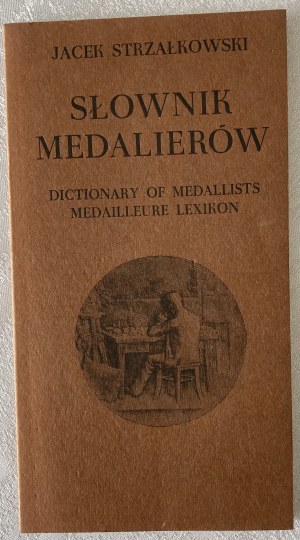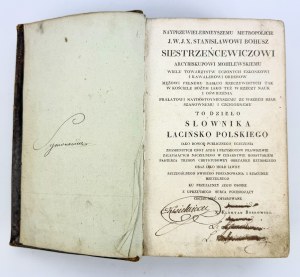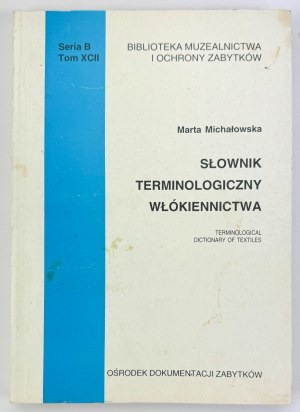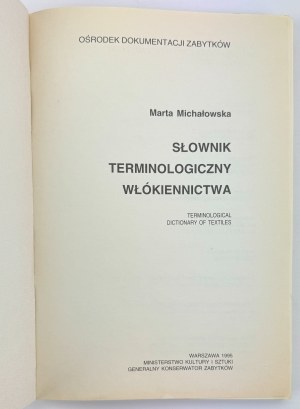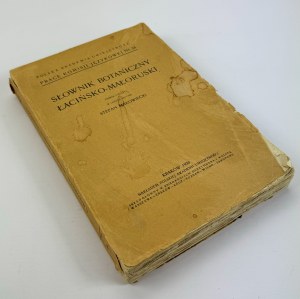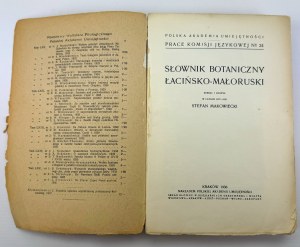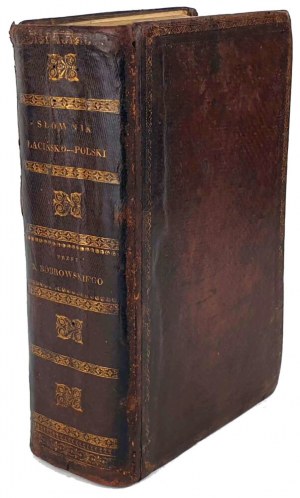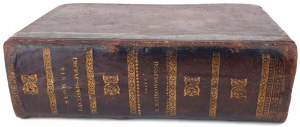DICTIONARY OF VISUAL ARTISTS
VISUAL ARTISTS OF WARSAW DISTRICT ZPAP 1945 - 1970
BIOGRAPHICAL DICTIONARY
ZPAP Warsaw District Warsaw 1972, pp. 716, format 33 x 18 cm, thickness approx. 3 cm, edition of 5000 copies.
HARD CLOTH BINDING WITH WRAPPERS
Biographies of about 2,600 artists. Numerous illustrations in the text.
The record of artistic activity is a problem of vital importance to the visual arts community and is accompanied by understandable interest. Except for the most prominent, whose achievements are catalogued and activities characterized in monographs, the work of most artists, making up the full picture of the development of national culture, remains without a visible record; most often, the death of an artist closes forever the history of his life and work. To date, the Association of Artists has not had an archive of documentation of the works of individual artists, and attempts to improve this situation have been limited by a lack of resources and organizational capacity. The Warsaw District Board decided once again to appeal to the deep understanding of social needs and great generosity that characterize the Warsaw visual arts community. The vast majority of the District's members supported the idea of the OW ZPAP Dictionary of Visual Artists and decided to maintain the additional voluntary contribution hitherto collected for the realization of the Warsaw House of the Visual Artist, in order to begin publishing work with these funds. The Warsaw political and municipal authorities appreciated the importance and social significance of the artists' initiative and took it under their protection, qualifying the publication as a varsavianum, and the Warsaw National Council decided to jointly bear the costs of implementation.
The present book, which includes an index of all members of the Warsaw District and biographical notes of some 2,600 artists, is the result of more than three years of work. Reviews were entrusted to a team of prominent art historians under the direction of Professor Juliusz Starzynski, director of the Art Institute of the Polish Academy of Sciences. The opinions received made it possible to remove a number of errors and fill in the gaps, and, despite many critical remarks, to obtain an overall positive assessment of the publication. Its purpose is to provide the public with information about the artists affiliated with the Warsaw District of ZPAP in 1945-1970, the characteristics of their interests and creative work, the diverse nature and effects of which make a significant contribution to the cultural life of our country. The criterion for determining the entries of the Dictionary was the evidenced membership of the OW ZPAP over the 25 post-war years. Thus, included in the Dictionary are both long-standing and current members of ZPAP, as well as those whose membership was limited by the date of transfer to other districts or the date of death. Due to the nature of the publication and the course of editorial work, members admitted to ZPAP later than mid-1969 could not be included in the Dictionary. There is also a group of artists whose biographical notes were not compiled as a result of the inability to contact the artist or because they refused to cooperate.
The primary source of information for compiling the biographies was a questionnaire filled out by the artist. It contained 34 questions, extensively and comprehensively analyzing the artist's creative silhouette and professional activities. The task of the editorial team was to select the news subordinated to the scheme of the note, and to check and clarify the facts given in the questionnaire. Biographical questionnaires contained fixed headings, but their completion was not obligatory, the artist had the right to select information, so there are inconsistencies among the notes. The absence of some headings in the generally accepted scheme may be the result of a choice made by the artist. Approval of the note's content was a condition for its inclusion in the publication. Special care was taken in collecting materials on deceased artists. Available archival documents, encyclopedias, catalogs and other publications were used, supplementing these sources with family contacts and data provided by living colleagues. The note begins with the artist's professional specialty, which was identified by the creator taking the primary field of art as a criterion. This is followed by the date and place of birth possibly death.
The introduction of the rubric "travel" was intended to supplement and expand the knowledge of the sources of creative inspiration. However, being aware of the relativity of these influences, it was assumed that any expansion of the news about the artist was expedient.
A detailed enumeration of the artist's creative fields, possibly supplemented by an indication of technique, material and subject matter, as well as chronological professional, pedagogical or social activities, comprises the next subtitle "creativity and activities." An extension of this heading are examples of works - the transmission of information about the artist's chosen achievements. Enumerated here, if possible placing in time, are the titles or the name of the effect of creative activity, the listing of which is ordered by specific disciplines. Both of these closely related headings show the paths taken and how deep the interference of the visual arts community in various areas of life goes.
The special importance that artists attach to the publication of their works through individual and group exhibitions was the reason for departing from the original premise of limiting the number of exhibitions to an exemplary five. For group exhibitions, the date, exhibition title and place of exhibition are listed. For individual exhibitions, only the date and place are included, thus highlighting the fact of publication of works, the title of the exhibition is omitted as being due to the type of disciplines practiced.
Next, all awards, honors and distinctions reported by the artist were included, treating them as an expression of achievement and complementing the general vision of the artist's activities and artistic activity. When listing awards and honors prior to 1939, the title of the honored work is also given as far as the information is available.
The process of reaching works of art to institutional and individual buyers is shown in the "collections" section. Mainly collecting institutions are included here; the indication of private collections is a reflection of public demand in the country and abroad.
The general intention of the publication, which does not have a monographic character, is subordinated to the bibliography, which is not cited in full; it covers only the most important or identifiable writing items. Catalogs, which are a natural record of the publication of work through exhibitions, have been omitted as not bringing new elements.
The inclusion of an address at the end of the notes of living artists-according to the accepted rules for similar publications-was thought to be expedient information for a publication of probably fairly large scope.
As already noted, and as the title suggests, the main area of activity of the artists appearing in the Dictionary is Warsaw For this reason, the rule in the text is that everything that took place outside of Warsaw is specified by giving the name / of a given locality. In other cases, the name Warsaw is omitted - with the exception of information requiring its introduction for the sake of text legibility. The volume of this publication has made it necessary for the publisher to use abbreviations, the unavoidable multiplicity and high frequency of which sometimes impede the communicability of the text. When citing the names of institutions, clubs, organizations, etc., the "Dictionary of Abbreviations" compiled by J. Paruch was used. There are also abbreviations created for the needs of our publication or commonly used abbreviations of common words. All abbreviations used in the text are included in the list included at the end of the book. Parallel to the content is the Dictionary's illustrative material, which includes two thousand reproductions. Each artist had the right to include a photograph of one selected work, not all of them exercised this right; special efforts were made to collect illustrations of works by deceased artists.
Conceived in this way, the publication is a record of the activities of Warsaw's artistic community, shows its contribution to the plastic culture of society, gathers the sum of knowledge needed today and useful for future research. The realization of such a complex publication in a relatively short period of time by the Warsaw District of the Association of Polish Artists was only possible with the enormous effort of the entire cooperating team. It is the duty of the District Board to express its sincere thanks to all whose help contributed to the Dictionary of Artists of the OW ZPAP. Giving into the hands of the reader our publication we express the hope that its favorable reception will be the expected compensation for our work.
MANAGEMENT BOARD OF THE WARSAW DISTRICT OF THE ASSOCIATION OF POLISH VISUAL ARTISTS
condition bdb-/ nice piece



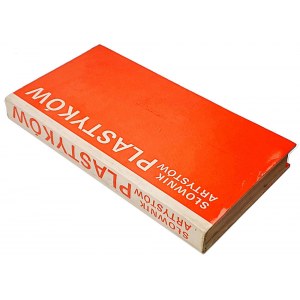

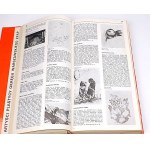
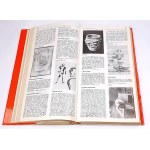






![BANACH- DICTIONARY OF FASHION [history of clothing].](https://img1.one.bid/img/6657/1882988_1x.jpg?1714428000)
![BANACH- DICTIONARY OF FASHION [history of clothing].](https://img1.one.bid/img/6657/1882988_2x.jpg?1714428000)
